It’s NOT a Business! It’s Our Water and Power!
BUTCHER ON LA--I’ve been reviewing LA’s documents for many, many years. Used to be the CAO had its own font. You’ll notice it If you look through old files. CLA reports all have a similar style. Again, you know it when you see it. Every public document has a date, always an author or authors, usually a signature. The DWP “reform” plan handed out at the beginning of last week’s Rules Committee meeting has none of these. It only just made its way into the council file.
Jack Humphreville responded to my Facebook post that all 2300 words of the “recommendations” were ‘written by Council President Herb Wesson’.
Ron Kaye followed up, got all Captain Renault: Shocked, I say!
But this is more than that. The Council vote to put a plan for the complete isolation and prospective privatization of the DWP is scheduled for Tuesday, Election Day. Surely CD 10 knows all the unions opposing many of these proposals will be out walking precincts. Before the full Council has even reviewed Herb’s “recommendations,” the EERC is set to issue bargaining instructions.
Who actually wrote the “recommendations”? Does it matter? Is it still smart, good government for Los Angeles to have a city charter? It would be so much easier (for them) if the city council could just make changes without a vote of the public.
Important terms: an ordinance -- a law -- can be adopted by the city council with a simple majority vote. It can be similarly rescinded with an aye vote of eight councilmembers. A charter change requires a winning vote of the people.
Let’s review exactly what is proposed for a charter-changing initiative screaming to this November’s ballot:
- Increase the size of the DWP Board of Commissioners from five to seven (1a)
- Change the length of their term from five years to three years with staggered terms (1b) (currently the charter encourages the use of staggered terms, allows departmental commissions to develop their own rules)
- Authorize the council to adopt an ordinance to create new board structure (1b) (3)
- Prohibit registered lobbyists from serving on the board (1c) (currently the charter prohibits anyone who is a registered lobbyist from serving) [Sec. 501(d)] (2)
- Require specific board member expertise in one or more of seven areas (1e)
- Authorize council to establish ordinance to pay board stipends (1e) (board members to be paid with the amount to be set by Council after the charter change passes)
- Add new due-process review to remove board members (1g)
- Add new hiring procedure for the General Manager of the DWP utilizing the same process as for the appointment of the Police Chief [Charter Section 575(a)], an open search recruitment, competitive evaluative process organized by the City’s Personnel Department, with the board responsible for ranking candidates for the Mayor’s selection and Council confirmation (1h)
- Create new analytical operation headed by an Executive Officer, with staff and hiring authority, to provide the board “added policy and fiscal analysis” (1i)
- Increase budget of the Office of Public Accountability to 0.05 percent of revenues from the previous year’s sale of water and electric energy (1j)
- Allow for the current incumbent Ratepayer Advocate to serve a second term without convening Citizens Committee (1k)
- Move authority from Council to the Board for: (1l)
- Franchises
- Concessions
- Permits
- Licenses
- Leases
- Contracts
- Require strategic investment and revenue requirement plan every four years -- beginning in 2020 (1m)
- Allow Council to ask for informational reports regarding board actions “for review only” (1n)
- Exempt all board actions regarding contracts from council oversight below an amount to be set by ordinance sometime in the future (1o)
- Authorize the City to waive the provisions of civil service by negotiating with the DWP unions (1p)
- Move salary negotiations from the City Council’s EERC to the Board of DWP Commissioners solely (1p)
- Require the utility to change from bi-monthly to monthly billing by January 1, 2020 (1q)
And these proposed changes in the section of the recommendations delineated as “Non-Charter Recommendations”:
- “Following the adoption of the ballot measure,” an ordinance establishing a monthly stipend of $2000 per month for the seven new board members, indexed to the relevant CPI (i.e., automatic raises) (2)
- Also an ordinance to set the salary of the GM (4)
- Another ordinance after the measure passes clarifying the roles and authority of the Office of Public Accountability (5) and some manner of “report-back” about changes to the role of the OPA that “could be further defined by ordinance.” (6) Hiring of exempt workers at the OPA also to be accomplished by ordinance (7)
- City Attorney will consult with the Board and report back on the role of the Board in overseeing litigation, recommendations to strengthen the work of the City Attorney at DWP also by ordinance (8) (the proposal to replace the City Attorney with its own DWP lawyers appears to have disappeared)
- CAO, CLA, Personnel Department, with input from DWP, come up with a hiring plan and an MOA with performance metrics, etc., within 60 days (9)
- Request bargaining instructions from the EERC to the DWP with help from the CAO and the Personnel Department to negotiate with all the bargaining units at the DWP to change collective bargaining agreements to expedite current hiring and promotion practices (10)
- Ordinance to increase the authority of the GM to approve contracts; exempt contracts less that a “certain amount” from council oversight) (11); recommends reports concerning contracts including charter regulations regulating the contracting of city work [Charter Section 1022] (12)
- Ordinance to increase the authority of the Board to enter into contracts without council approval (13)
- Exempt the DWP from existing purchasing rules (14) (15)
- Exempt the DWP from the Mayor’s Executive Directive 4, Intergovernmental Relations (17)
- CAO, CLA, DWP to determine a way to “allow the Board to assume all collective bargaining responsibilities with regard to the DWP bargaining units.” (18)
- Request a report from the City Attorney to the City Council regarding outstanding litigation about the Power Revenue Transfer (19)
- DWP, with the City Attorney, CLA, CAO, the Board of Public Works, and the Bureau of Sanitation to study and report back “with an analysis on creating a fully integrated water group.” (20)
- DWP, with the City Attorney, CLA, CAO to report back on options to help Rec & Parks, non-profits “that provide publicly accessible open space, and low income seniors” help with water and electric bills (21)
- DWP, with the CLA, CAO to report back on options to help ensure access to clean energy solutions not limited by geography or income (22)
- DWP, with the CLA, CAO to study the feasibility of creating new executive level management position to advocate for the “interests of underserved low income customer market segment” (23)
- Blanket authority to “make any technical modifications and/or legal corrections to the draft election ordinance, draft resolution, draft ordinance requests, and any other related actions” (24)
At the June 2 meeting of the Rules & Elections Committee at which these “recommendations” were introduced and briskly adopted, DWP General Manager Marci Edwards said that the DWP is a business.
It is not. It is the largest municipally owned and operated public utility in the United States, the power and water of the people of Los Angeles. Efforts to privatize, corporatize, or monetize the City’s assets stand squarely in the face of history.
This move is a privatization scheme, plain and simple. Every one of the problems at the DWP could be solved by greater public scrutiny, not less, with coordinated, strategic help from the rest of the City family.
As Erwin Chemerinsky, dean of the UC Irvine School of Law and former chair of the elected charter reform commission reminded us in an LA Times op-ed last week City Council should retain oversight of DWP: “Like the airport and harbor, DWP is a proprietary department — essentially a business owned and operated by the city. It is undeniably a complex organization and reforms are warranted. But every broken water main and blackout reminds us that public accountability is indispensable.” [Emphasis mine]
(Julie Butcher writes for CityWatch, is a retired union leader and is now enjoying Riverside and her first grandchild. She can be reached at [email protected])
-cw

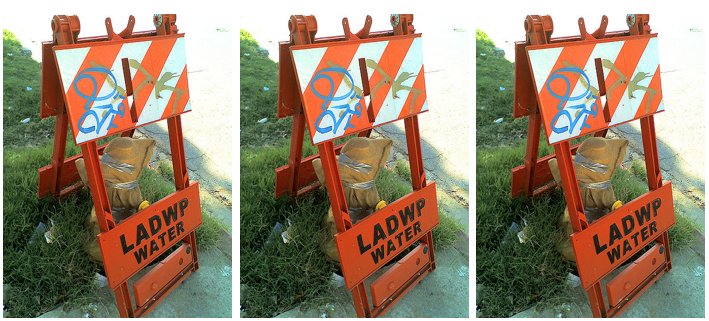
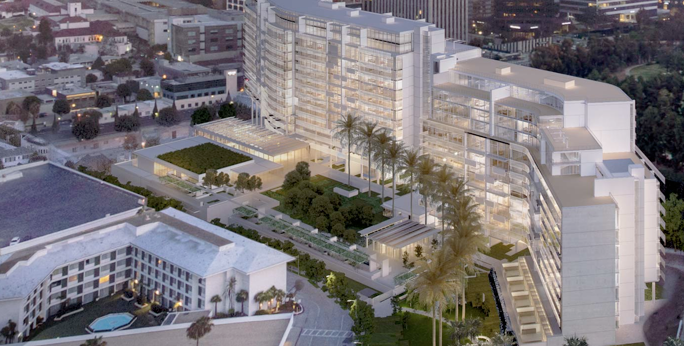


 Ads for movies and TV shows with the firing or brandishing of guns are a staple of street furniture and billboard advertising, and often show up near schools, playgrounds, and other places where young people congregate. A few years ago, one showing a sniper firing a rifle appeared on a billboard directly across the street from a Westchester elementary school, and another depicting an actor waving a gun was placed in a bus shelter in front of Venice High School, just steps from where a student was shot and killed the year before.
Ads for movies and TV shows with the firing or brandishing of guns are a staple of street furniture and billboard advertising, and often show up near schools, playgrounds, and other places where young people congregate. A few years ago, one showing a sniper firing a rifle appeared on a billboard directly across the street from a Westchester elementary school, and another depicting an actor waving a gun was placed in a bus shelter in front of Venice High School, just steps from where a student was shot and killed the year before.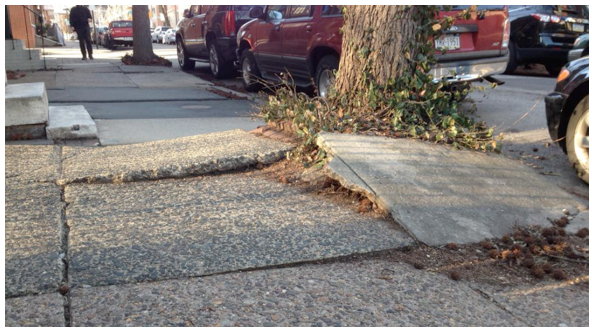



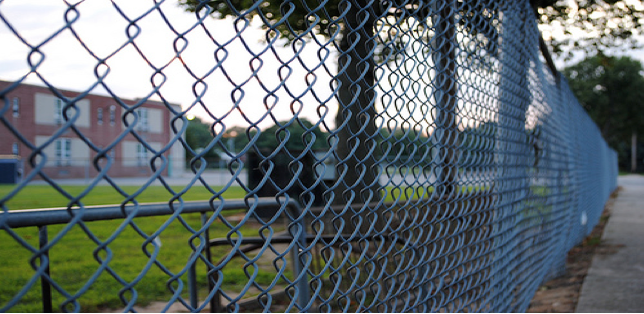
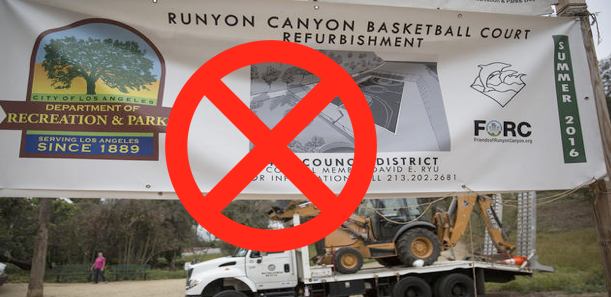











 If I sound angry, it’s for good reason: I am.
If I sound angry, it’s for good reason: I am.















